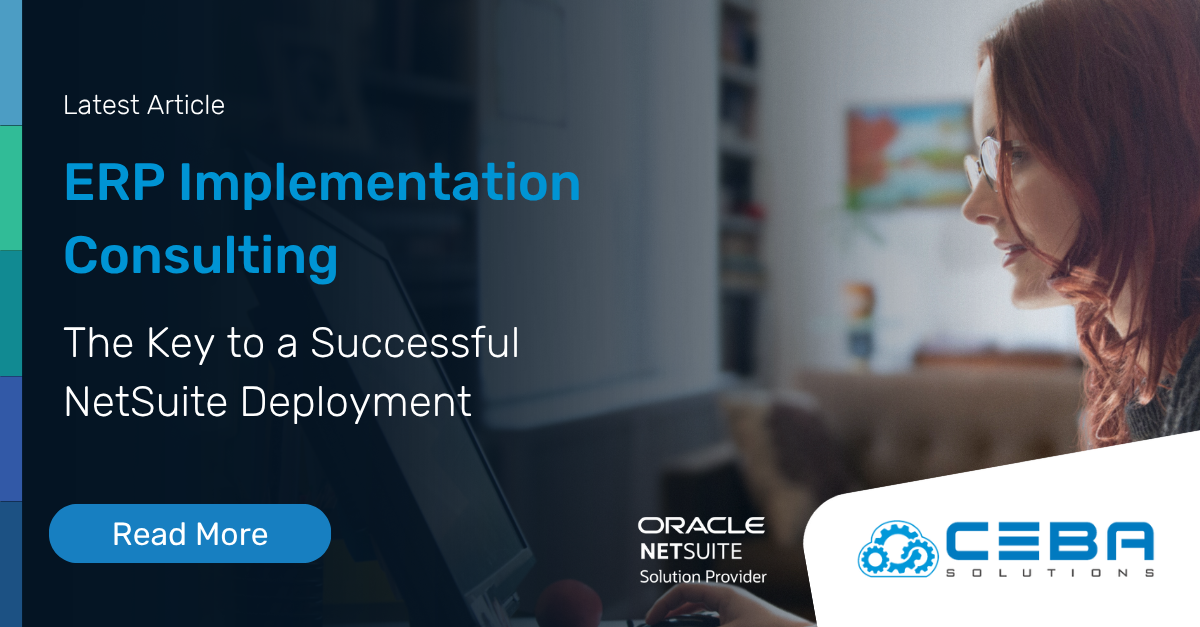
Project Billing Options and How They Impact Your Services Cash Flow
Project Billing Options and How They Impact Your Services Cash Flow
The financial success of any service-based business largely depends on how effectively cash flow is managed. One key aspect of managing cash flow is choosing the right project billing option that aligns with your business model and client expectations. In this article, we will discuss various project billing options and their impact on your services cashflow.
Fixed-Price Billing
Fixed-price billing is a popular method for charging clients in various service-based industries. It involves determining a one-time fee for a specific project or service, which is agreed upon before the project commences. This billing method offers both clients and service providers several benefits and challenges.
Benefits of Fixed-Price Billing
Clarity and Predictability
One of the most significant advantages of fixed-price billing is the clear understanding it provides for both parties. Clients know the total cost upfront, making it easier for them to budget and plan accordingly. Service providers can also benefit from the predictability of a fixed fee, as it simplifies the billing process and reduces the potential for disputes over the final invoice.
Incentive for Efficiency
Fixed-price billing incentivizes service providers to complete projects on time and within budget. Since the fee is predetermined, businesses must manage their resources efficiently to maximize profit. This can lead to better project management practices, improved productivity, and ultimately, more satisfied clients.
Impact on Cash Flow
Pros: Improved Short-term Cash Flow
Fixed-price billing enables businesses to receive payments upfront or at agreed milestones throughout the project. This arrangement can help improve short-term cash flow, as businesses have a steady stream of income throughout the project's duration.
Cons: Potential Negative Effects on Cash Flow
Despite its advantages, fixed-price billing also comes with certain challenges that can impact cash flow:
Risks Associated with Fixed Price Billing
Underestimating Project Scope
If a project's scope is underestimated, businesses may find themselves dedicating more hours or resources than initially planned. This can negatively affect cash flow, as there is no option to bill clients for the additional work.
Scope Creep
Scope creep occurs when clients request changes or additions to the project that were not included in the original agreement. Since the fee is fixed, businesses may struggle to accommodate these requests without sacrificing profitability, which can strain cash flow.
Delays and Overruns
Project delays and cost overruns can have a significant impact on cash flow in a fixed-price billing model. If a project takes longer than anticipated, businesses must continue to allocate resources without the ability to bill for the extra time spent. This can lead to cash flow issues, particularly for smaller businesses with limited financial reserves.
"When implementing Fixed Price Billing, it's crucial to accurately estimate project costs and set a clear scope of work. This approach helps businesses maintain predictability in their revenue streams, but also requires diligent project management to ensure that costs are kept under control and deliverables are met on time and within budget. - Zabe Siddique, CEO - CEBA Solutions
Time and Materials Billing
Time and materials billing is a widely used method in various service-based industries. It involves charging clients based on the actual time spent and resources used on a project. This flexible approach offers benefits for both the client and the service provider and can lead to a more accurate reflection of the work performed. In this article, we will delve deeper into time and materials billing and its impact on cash flow.
Benefits of Time and Materials Billing
Flexibility and Adaptability
Time and materials billing offers flexibility for both clients and service providers, allowing for changes in the project's scope or requirements. This adaptability ensures that businesses are compensated fairly for the work they perform, while clients pay for the actual services rendered.
Transparency and Accountability
With time and materials billing, clients receive detailed invoices that outline the hours worked and resources utilized. This transparency can help build trust between clients and service providers, as clients can clearly see where their investment is being utilized.
Impact on Cash Flow
Pros: Fair Compensation for Work Performed
One significant advantage of time and materials billing is the assurance that businesses are paid for all work performed. This method provides a more accurate reflection of a project's value, ensuring that service providers are fairly compensated for their time and resources.
Cons: Fluctuating Cash Flow
While time and materials billing has its benefits, it can also lead to fluctuations in cash flow. Payments are dependent on the number of hours worked and resources used, making it difficult to predict the exact amount of income a business will receive from a project. This uncertainty can make it challenging to manage cash flow, particularly for smaller businesses with limited financial resources.
Tips for Managing Cash Flow with Time and Materials Billing
To help maintain a healthy cash flow when using time and materials billing, consider the following strategies:
Regular Invoicing
Implement a regular invoicing schedule, such as weekly or biweekly, to ensure a steady stream of income throughout the project's duration.
Accurate Time Tracking
Use time tracking software to record hours worked accurately. This practice not only supports fair billing but also provides valuable data for future project estimates.
Ensure Transparency Over Resource Workloads
Keep a close eye on resource utilization and adjust project plans accordingly to avoid overspending on materials or labor.
Clear Communication
Maintain open communication with clients about project progress and any potential changes to the scope or timeline. This practice can help manage client expectations and reduce the likelihood of disputes over billing.
"Time and Materials Billing offers flexibility for businesses and clients, as it allows for adjustments to the scope of work and project timelines. However, it's important to have transparent communication, detailed time tracking, and accurate record-keeping to ensure that clients are billed fairly and businesses are compensated for their efforts." - Zabe Siddique, CEO - CEBA Solutions
Retainer Billing
Retainer billing is a common model used by service providers to charge clients for ongoing services. Typically, clients pay a recurring fee, often on a monthly basis, in exchange for a specified level of service. This method provides service providers with a steady stream of income while guaranteeing clients access to the services they require.
Benefits of Retainer Billing
Consistent Revenue Stream
One of the primary advantages of retainer billing is the consistent revenue stream it generates. This predictability can help businesses manage their finances more effectively and plan for future growth.
Client Relationship Development
Retainer billing also fosters long-term relationships between clients and service providers. Clients benefit from ongoing support, while service providers gain a better understanding of their clients' needs, enabling them to provide tailored solutions.
Impact on Cash Flow
Pros: Predictable Cash Flow
Retainer billing offers a predictable cash flow, which can simplify financial management for businesses. Knowing how much income to expect each month makes it easier to budget for expenses, invest in growth initiatives, and maintain a healthy cash reserve.
Cons: Potential Scope Changes and Renegotiation
Despite its advantages, retainer billing can also present challenges that may impact cash flow:
Risks Associated with Retainer Billing
Expanding or Contracting Scope of Work
If the scope of work changes significantly, retainer fees may need to be renegotiated. This process can be time-consuming and may lead to temporary fluctuations in cash flow.
Client Attrition
Losing clients or experiencing a decrease in demand for services can also impact cash flow. To maintain a stable cash flow, businesses must actively work to retain existing clients and attract new ones.
Pricing Challenges
Setting the appropriate retainer fee can be a challenge. If the fee is set too low, businesses may struggle to cover their costs and maintain profitability. Conversely, if the fee is too high, clients may be deterred from entering into a retainer agreement.
Tips for Managing Cash Flow with Retainer Billing
To maintain a healthy cash flow while using a retainer billing model, consider these strategies:
Regularly Review and Adjust Retainer Fees
Periodically evaluate the retainer fees you charge to ensure they accurately reflect the value of the services you provide. Adjust fees as needed to account for changes in the market or your clients' needs.
Maintain Open Communication with Clients
Keep the lines of communication open with your clients to address any concerns or changes in the scope of work. This practice can help prevent disputes and ensure that your retainer fees remain aligned with the services provided.
Diversify Your Client Base
To reduce the risk of cash flow disruptions, cultivate a diverse client base. This approach can help protect your business from financial setbacks if one or more clients discontinue their retainer agreements.
"Retainer Billing is ideal for businesses providing ongoing services to clients, fostering long-term relationships and creating a steady revenue stream. To make the most of this billing model, it's essential to set clear expectations, establish trust with clients, and deliver consistent results that demonstrate the value of the retainer arrangement." - Zabe Siddique, CEO - CEBA Solutions
Value-Based Billing
Value-based billing is a pricing model that charges clients based on the perceived value of the services provided, rather than the time spent or resources used. This approach emphasizes the results and outcomes achieved by the service provider, fostering a focus on delivering high-quality solutions that meet clients' needs.
Aligning Interests and Outcomes
One of the main advantages of value-based billing is that it aligns the interests of both clients and service providers. By focusing on the value delivered, businesses are incentivized to provide exceptional results, which can lead to increased client satisfaction and long-term relationships.
Flexibility in Pricing
Value-based billing offers flexibility in pricing, allowing service providers to charge premium fees for high-value services. This approach can lead to higher profits for businesses that consistently deliver outstanding results.
Impact on Cash Flow
Pros: Potential for Higher Revenue
One of the primary benefits of value-based billing is the potential for higher revenue. By charging clients based on the value of the services provided, businesses can command higher fees for premium services, which can positively impact cash flow.
Cons: Fluctuating Cash Flow and Pricing Challenges
Despite its potential advantages, value-based billing also presents challenges that can impact cash flow:
Fluctuating Cash Flow
Value-based billing can lead to fluctuations in cash flow, as the amount of revenue generated can vary based on the perceived value of each project. This unpredictability can make it challenging for businesses to manage their finances and maintain a stable cash reserve.
Pricing Challenges
Determining the appropriate value-based fee can be difficult, as it requires a deep understanding of clients' needs and an accurate assessment of the value delivered. Underpricing services can lead to cash flow issues, while overpricing may deter clients from engaging with your business.
Tips for Managing Cash Flow with Value-Based Billing
To maintain a healthy cash flow while using a value-based billing model, consider these strategies:
Clearly Define the Scope and Value of Services
Develop a clear understanding of the value your services provide to clients and communicate this value effectively. This practice can help justify your pricing and ensure that clients appreciate the benefits they receive.
Hybrid Billing Models
Hybrid billing is a pricing model that combines elements of various billing methods, such as fixed-price, time and materials, retainer, and value-based billing. This approach offers flexibility and customization, enabling service providers to tailor their pricing structures to meet the unique needs of each client and project.
Benefits of Hybrid Billing
Customization and Flexibility
One of the main advantages of hybrid billing is its flexibility. By combining different billing methods, businesses can create customized pricing structures that reflect the specific requirements of each project, ensuring fair compensation for their services.
Adaptability to Different Projects
Hybrid billing allows service providers to adapt their pricing strategies to suit the needs of various projects and clients. This adaptability can help businesses attract a varied range of clients and ensure their pricing remains competitive in the market.
Impact on Cash Flow
Pros: Diversified Revenue Streams
One of the primary benefits of hybrid billing is the potential for creating additional revenue streams. By using a combination of billing methods, businesses can generate income from multiple sources, which can help stabilize cash flow and reduce dependency on any single billing method.
Cons: Complexity and Fluctuating Cash Flow
Despite its potential advantages, hybrid billing also presents challenges that can impact cash flow:
Complexity in Billing and Management
Hybrid billing can be more complex than using a single billing method, as it requires businesses to manage multiple pricing structures and billing processes. This complexity can increase administrative costs and may require additional resources to manage effectively.
Fluctuating Cash Flow
Similar to other billing methods, hybrid billing can lead to fluctuations in cash flow. The unpredictability of revenue generated from different billing methods can make it challenging for businesses to manage their finances and maintain a stable cash reserve.
Tips for Managing Cash Flow with Hybrid Billing
To maintain a healthy cash flow while using a hybrid billing model, consider these strategies:
Establish Clear Billing Policies
Develop clear billing policies that outline the various pricing structures and billing methods you use. This practice can help clients understand your pricing and ensure that your fees are accurately calculated and communicated.
Monitor Cash Flow Closely
With the potential for fluctuating cash flow, it is essential to monitor your financial performance closely. Regularly review your cash flow projections and make adjustments as needed to ensure your business remains financially stable.
"Hybrid Billing combines the benefits of various billing models to offer a tailored solution for both businesses and clients. When implementing this approach, it's important to carefully assess each project's unique requirements, weigh the pros and cons of each billing model, and strike a balance that satisfies both parties while maintaining profitability and fostering collaboration. - Zabe Siddique, CEO - CEBA Solutions
Using Technology to Streamline Billing Processes
As businesses grow and evolve, managing billing processes can become increasingly complex and time-consuming. Embracing technology can help streamline these processes, improve efficiency, reduce errors, and ultimately enhance cash flow management.
Technologies for Streamlining Billing Processes
Billing and Invoicing Software
Billing and invoicing software enables businesses to automate the creation, management, and tracking of invoices. By using these tools, companies can reduce the time spent on manual billing tasks, minimize errors, and ensure timely payments from clients.
Key features of billing and invoicing software include:
- Customizable invoice templates
- Automated invoice generation
- Integration with accounting and project management software
- Payment tracking and reminders
- Reporting and analytics
Time Tracking Tools
Time tracking tools can help businesses accurately monitor the time spent on projects, particularly for time and materials or hybrid billing models. These tools enable businesses to generate detailed timesheets, which can be used for billing purposes and to improve project efficiency.
Key features of time tracking tools include:
- Time tracking by project, task, or team member
- Integration with billing and project management software
- Real-time reporting and analytics
- Mobile and desktop applications
Online Payment Platforms
Online payment platforms allow businesses to accept payments from clients electronically, simplifying the payment process and reducing the time it takes to receive funds. These platforms often support various payment methods, such as credit cards, bank transfers, and digital wallets, making it easier for clients to pay their invoices.
Key features of online payment platforms include:
- Multiple payment methods
- Secure payment processing
- Integration with billing and accounting software
- Automated payment reminders and notifications
- Transaction reporting and analytics
Subscription Management Software
For businesses using retainer or subscription-based billing models, subscription management software can help streamline the billing process. These tools automate recurring payments, manage subscription plans, and handle billing-related communications with clients.
Key features of subscription management software include:
- Automated recurring billing
- Subscription plan management
- Integration with billing, accounting, and payment processing software
- Reporting and analytics
Benefits of Using Technology for Billing Processes
Implementing technology to streamline billing processes can yield several benefits for businesses:
Improved Accuracy and Consistency
By automating billing processes, businesses can reduce the likelihood of human errors and inconsistencies that can arise from manual tasks. Accurate invoicing leads to better client relationships and minimizes the risk of disputes, ultimately contributing to a smoother cash flow.
Enhanced Cash Flow Management
Technology enables businesses to track payments, send automated reminders, and provide a variety of payment options to clients. This results in faster payments and improved cash flow management, allowing businesses to allocate resources effectively and plan for future growth.
Increased Efficiency and Productivity
Streamlined billing processes free up valuable time for business owners and employees, enabling them to focus on their core services and develop strategies for growth. Automating repetitive tasks can also boost employee morale by reducing the burden of manual work.
Better Decision Making
Advanced reporting and analytics provided by technological solutions can help businesses identify trends, track key performance indicators, and make data-driven decisions. This information can be invaluable in optimizing billing processes and pricing strategies, ultimately enhancing the company's financial performance.
Competitive Advantage
In an increasingly digital world, businesses that adopt advanced billing technologies can differentiate themselves from competitors. By providing clients with a seamless and user-friendly billing experience, companies can attract and retain clients more effectively.
Conclusion
The use of technology in streamlining billing processes is more critical than ever in today's digital age. Businesses can significantly enhance their efficiency and financial performance by embracing the right technological solutions.
By harnessing the power of technology, businesses can not only improve the accuracy and consistency of their billing processes but also enhance cash flow management, boost efficiency, and drive growth. Investing in the right technological solutions is an essential step toward ensuring long-term success in an increasingly competitive and digital business landscape.










